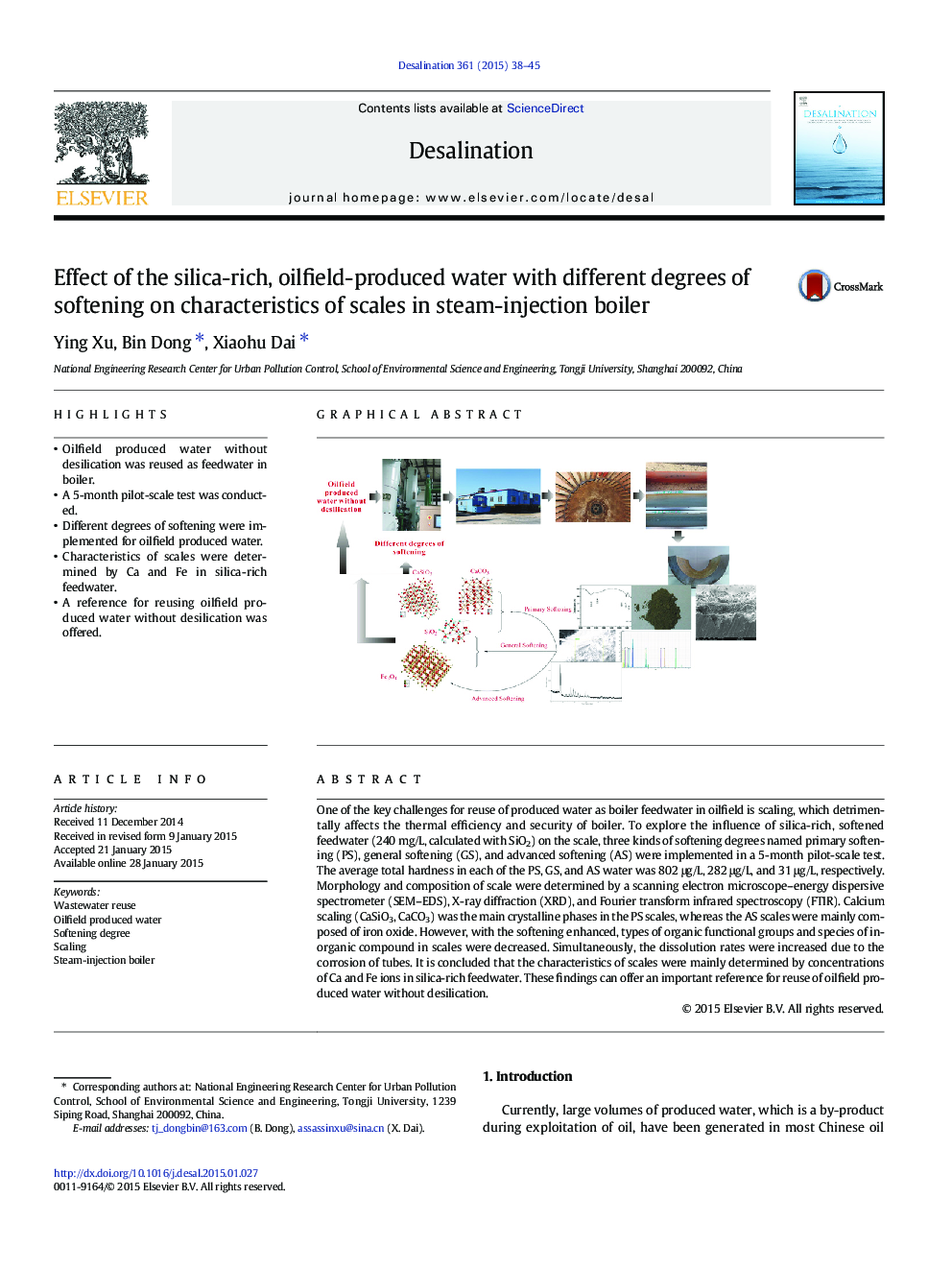| Article ID | Journal | Published Year | Pages | File Type |
|---|---|---|---|---|
| 623180 | Desalination | 2015 | 8 Pages |
•Oilfield produced water without desilication was reused as feedwater in boiler.•A 5-month pilot-scale test was conducted.•Different degrees of softening were implemented for oilfield produced water.•Characteristics of scales were determined by Ca and Fe in silica-rich feedwater.•A reference for reusing oilfield produced water without desilication was offered.
One of the key challenges for reuse of produced water as boiler feedwater in oilfield is scaling, which detrimentally affects the thermal efficiency and security of boiler. To explore the influence of silica-rich, softened feedwater (240 mg/L, calculated with SiO2) on the scale, three kinds of softening degrees named primary softening (PS), general softening (GS), and advanced softening (AS) were implemented in a 5-month pilot-scale test. The average total hardness in each of the PS, GS, and AS water was 802 μg/L, 282 μg/L, and 31 μg/L, respectively. Morphology and composition of scale were determined by a scanning electron microscope–energy dispersive spectrometer (SEM–EDS), X-ray diffraction (XRD), and Fourier transform infrared spectroscopy (FTIR). Calcium scaling (CaSiO3, CaCO3) was the main crystalline phases in the PS scales, whereas the AS scales were mainly composed of iron oxide. However, with the softening enhanced, types of organic functional groups and species of inorganic compound in scales were decreased. Simultaneously, the dissolution rates were increased due to the corrosion of tubes. It is concluded that the characteristics of scales were mainly determined by concentrations of Ca and Fe ions in silica-rich feedwater. These findings can offer an important reference for reuse of oilfield produced water without desilication.
Graphical abstractFigure optionsDownload full-size imageDownload as PowerPoint slide
